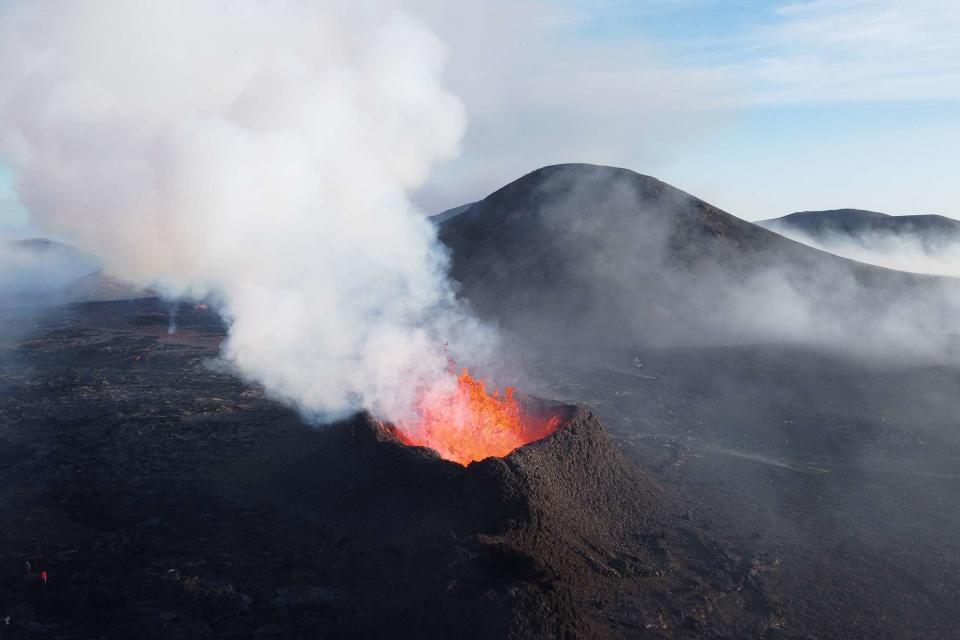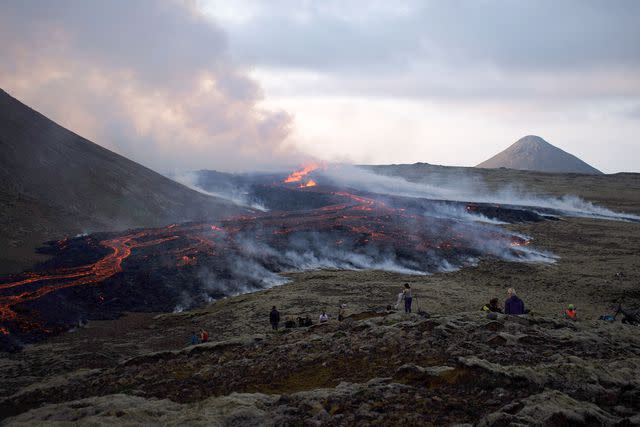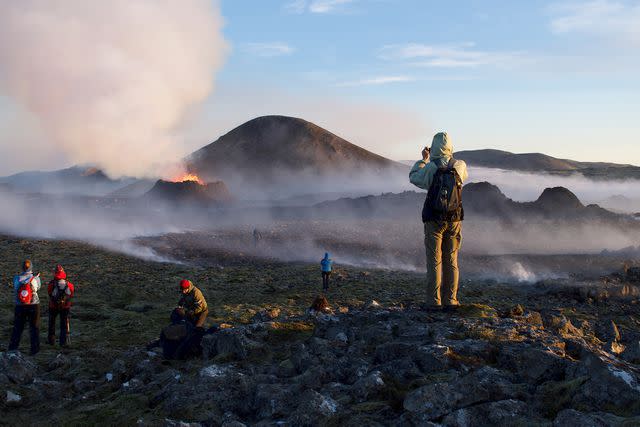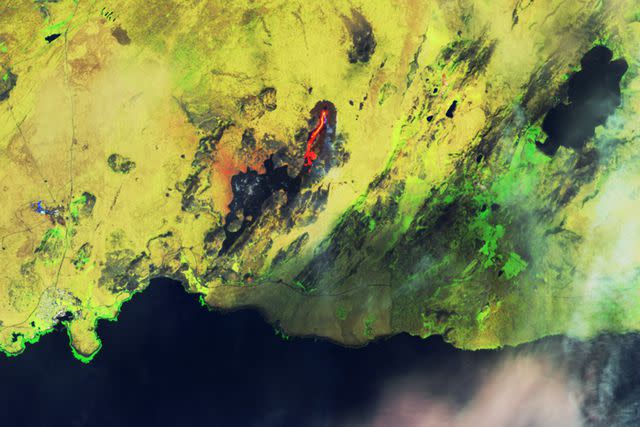Iceland's New 'Baby Volcano' Was Dormant for 800 Years — and You Can Watch Its Eruption
The Earth's newest volcano appears to be slowing down.

JEREMIE RICHARD/Getty Images
Smoke billowing from lava during an volcanic eruption at Litli Hrutur on July 12, 2023, south-west of Reykjavik in IcelandActive volcanoes like Mount Vesuvius and Mauna Loa have long dominated the news cycle, but as of July 10, there’s a new volcano in town. And this one — deemed a “baby volcano” — has already put on quite a show. The eruption, which started near Litli-Hrútur, a small peak between the cities of Reykjavik and Keflavik in Iceland, has finally slowed.
“It is still too early to declare that the eruption at Litli-Hrútur is over, though it appears evident that a new phase of the eruptive activity in the Reykjanes peninsula has started. It is premature to anticipate if the seismic activity will increase again and a new eruption will begin in the future, or not. Only time will tell,” reported the Icelandic Meteorological Office on Aug. 8.

JEREMIE RICHARD/Getty Images
There is still an active “hazard map” that outlines the boundaries of the new lava fields and warns of volcanic gas pollution, but the area surrounding Litli-Hrútur reopened to tourists on July 17. (This is, of course, subject to change. The latest conditions, including trail status, can be found at visitreykjanes.is.)
The road to near-normalcy has been a long one. During the initial eruption, fountains of lava spewed from fissures in the Earth. And within two days of the eruption, around 300 earthquakes were recorded on the Reykjanes Peninsula.
Shortly after the start of the event, two of the cracks closed. (According to NASA’s Earth Observatory, the length of the main fissure shrank from around 2,624 feet to about 246 feet.) But one crack continued to erupt, forming a crater.
Between July 10 and July 31, the Icelandic Meteorological Office reports that around 4.2 billion gallons of lava were released — that's enough lava to fill about 16.5 Olympic-sized pools.

JEREMIE RICHARD/Getty Images

Courtesy of The Earth Observatory
The eruption that led to the birth of the Earth’s newest “baby volcano” occurred within the already-established Fagradalsfjall volcanic system. The Litli-Hrútur eruption marks the third consecutive summer of activity within the system, which had previously been quiet for 800 years. The recent eruption followed a months-long event in March 2021 and a weeks-long event in August 2022, according to NASA’s Earth Observatory.
To see the baby volcano erupt, you can watch this footage from July 19 or view the ongoing live stream from afarTV on youtube.com.
For more Travel & Leisure news, make sure to sign up for our newsletter!
Read the original article on Travel & Leisure.

